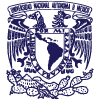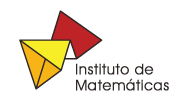Determining Feature Extractors for Semi-supervised Learning on Satellite Images
Institución: University of California San Diego
Tipo de Evento: Investigación
Advances in satellite imagery presents unprecedented opportunities for understanding natural and social phenomena at global and regional scales. Although the field of satellite remote sensing has evaluated imperative questions to human and environmental sustainability, scaling those techniques to very high spatial resolutions at regional scales remains a challenge. Satellite imagery is now more accessible with greater spatial, spectral and temporal resolution creating a data bottleneck in identifying the content of images. Because satellite images are unlabeled, unsupervised methods allow us to organize images into coherent groups or clusters. However, the performance of unsupervised methods, like all other machine learning methods, depends on features. Recent studies using features from pre-trained networks have shown promise for learning in new datasets. This suggests that features from pre-trained networks can be used for learning in temporally and spatially dynamic data sources such as satellite imagery. It is not clear, however, which features from which layer and network architecture should be used for learning new tasks. In this paper, we present an approach to evaluate the transferability of features from pre-trained Deep Convolutional Neural Networks for satellite imagery. We explore and evaluate different features and feature combinations extracted from various deep network architectures, and systematically evaluate over 2,000 network-layer combinations. In addition, we test the transferability of our engineered features and learned features from an unlabeled dataset to a different labeled dataset. Our feature engineering and learning are done on the unlabeled Draper Satellite Chronology dataset, and we test on the labeled UC Merced Land dataset to achieve near state-of-the-art classification results. These results suggest that even without any or minimal training, these networks can generalize well to other datasets. This method could be useful in the task of clustering unlabeled images and other unsupervised machine learning tasks.

